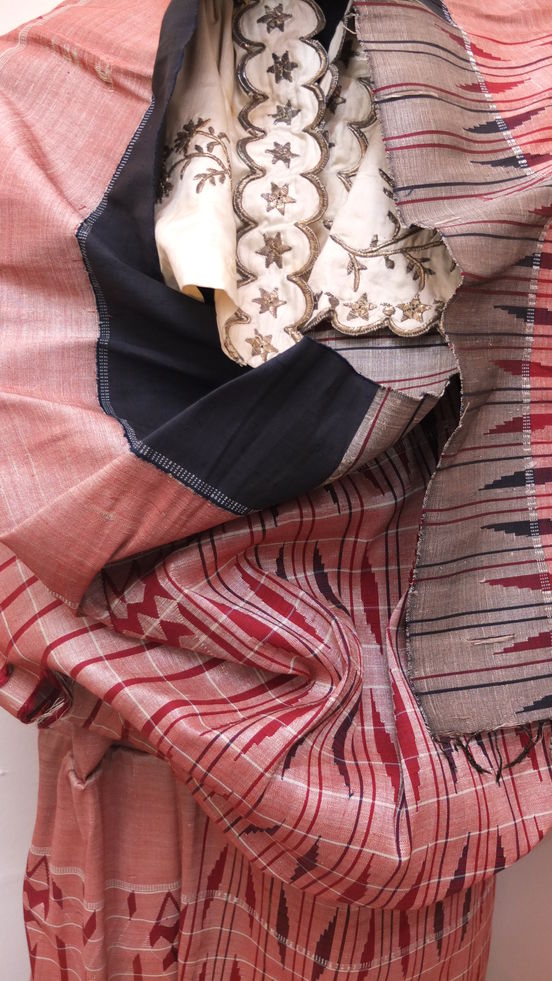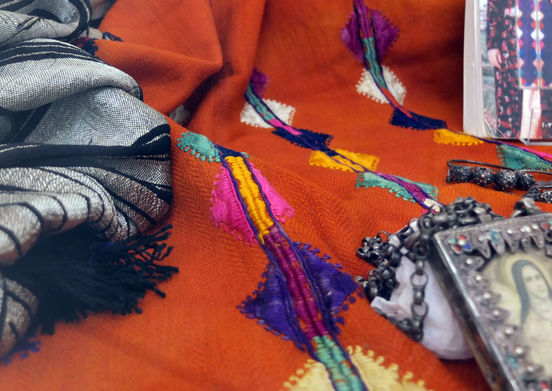Growing up in Iraq collector Enaam Battani recalls that she had an 'incomprehensible passion' for old things. She recalls a childhood visit to the remnants of the city of Babylon where she tried to souvenir fragments and her father forbidding her to remove these fragments. This experience kindled her interest in Iraqi antiquities and culture. This passion has travelled with her and is expressed in a number of ways in her life in New Zealand. As a jeweller she works with silver and Bedouin jewellery elements, often reshaping and redesigning broken elements, to create new works that convey the richness of the cultures of Iraq.
She also brought to New Zealand a collection of costumes and textiles some of which she had inherited and some of which she had acquired herself. The works on display were made in the period 1850 through to 1940 and comprise mainly works in muslin and silk. After the 1940s Iraqi women, especially Christians and Jews, embraced European fashion styles and some traditional garments fell out of favour.
The Iraqi city of Mosul was famed for producing a very fine and delicate cotton fabric. This fabric, although first created elsewhere in Asia, came to be known as muslin, named after the city of Mosul because, it is believed, Mosul because it was the place where European traders first encountered this prized cloth. Muslin clothes were worn for weddings, baptisms and other special occasions, often embroidered with real silver or gold thread depending on the wealth of the family. Jewish and Christian woman were often the embroidery experts. Silk was used extensively by Iraqi women specially to cover themselves, over their clothes when they leave the house. Women wore a silk garment, called by Christian and Jewish women, Izar, and an Abbaya by Muslims. A woman would have just one Izar to wear outside of the house because of the cost. The Izar is in two parts, the top part covering the back and head. It is made of high-quality woven silk using silver and gold thread which makes it both attractive and durable. The pattern of the Izar fabric is always the same but the colours change. Location frequently determined the colorfulness and form of Christian and Jewish women's garments. In the North of Iraq, where the climate was cooler, women wore traditional regional garments, rather than the Izar, made of sheep and goat wool rather than silk.

